How To Care For Tulips After Blooming
Learn how to care for your tulips after blooming right here!
Tulip flowers light up early spring with their bright beautiful blooms. These gorgeous plants are a welcome sight in the spring flower beds but the blooms only last a few weeks.
So what should be done with these cheerful spring bulbs once they are done blooming!? This guide to tulip care after blooming will show you how to care for your tulips after they have flowered.

As an added bonus, following these tips will give you the best chance at having your tulips re bloom as perennials the following year!
Looking for more tips on growing spring-flowering bulbs? Learn to plant tulip bulbs here!
How To Care For Tulips After They Bloom
After tulip bulbs have flowered, snip off the head of the flower but leave the leaves and foliage in place. Let the foliage stay for 4-6 weeks to collect light from the sun, which creates energy for the plant!
Do not braid tulip leaves or cut them off as it will reduce the surface area available to the sun!
Once tulip flowers are done blooming and are starting to wilt, use a clean pair of scissors or garden shears to remove the spent flowers only (not the leaves and foliage!).
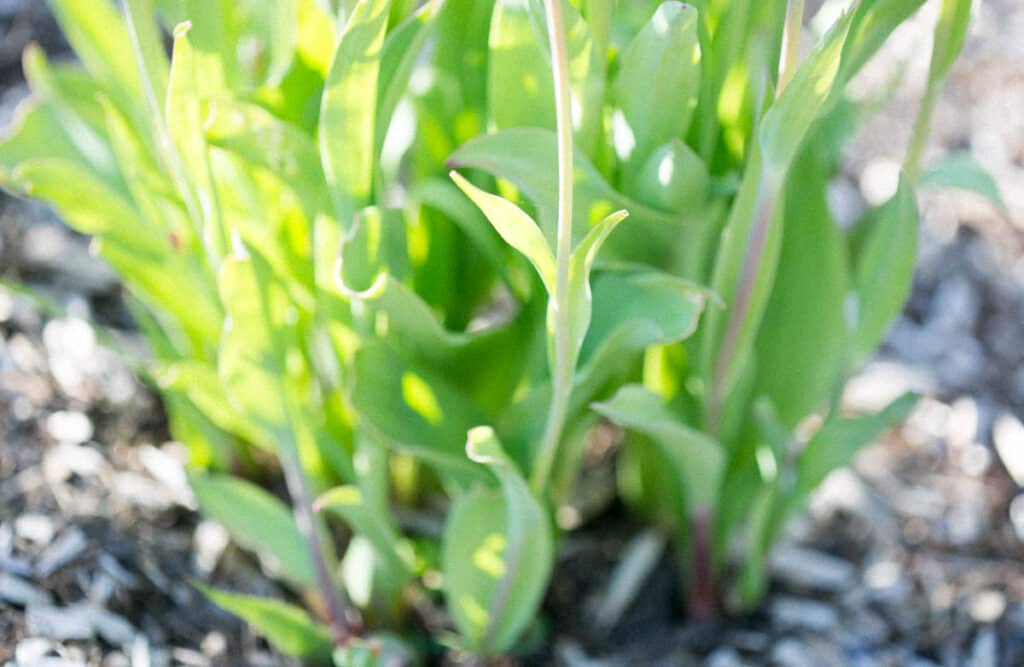
Make sure to leave the entire plant and the plant leaves and foliage in place. This signals the plant to put energy into the bulb for the next growing season. Deadhead, or remove, each spent flower.
You can remove the dead flower heads either at the base of the flower stalk or right under the head of the flower. We prefer to remove them at the base because it looks cleaner!
Removing the flower will prevent the plant from putting its energy into the seed pod and instead allow the plant to put it’s energy into the new bulbs, storing food for the following year. In this way the tulip focuses on gathering energy and storing it for next year’s flowers.
The tulip leaves collect energy from the sun and convert it into food for the bulb through a process called photosynthesis. Properly caring for tulips after they bloom gives you the best chance of receiving another tulip flower the following spring.
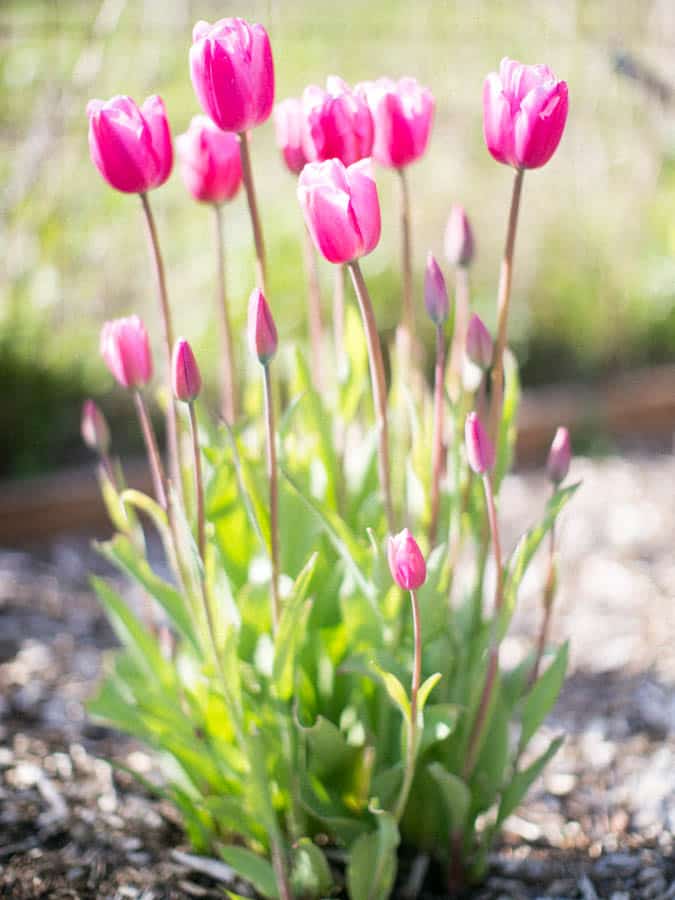
The foliage and leaves will begin to decay and will fade away by late spring to early summer. When they have turned yellow and look dried out you can remove them!
Once the tulips are completely done blooming, apply a bulb fertilizer to nourish perennial tulips. Granular fertilizer is a good option.
Key takeaway: Remove the flower head but leave the tulip foliage and dead leaves in place to collect energy from the sun… this is energy the plant uses to create new tulip bulbs from the mother bulb for the following spring.
Get the best list of early blooming flowers for the spring garden here.
How A Tulip’s Life Cycle Affects After Bloom Care
Understanding the tulip bulb life cycle can lend insight into how we care for the flowers after they bloom.

Tulip bulbs are planted in late fall to early winter. The cold, moist soil encourages root growth. They need these cold soil temperature in order to grow roots. (This is why warmer climates sometimes have difficulty growing tulips!).
Tulips require chilling temperatures between 35 and 50 degrees Fahrenheit.
In early spring tulip flowers push up through the soil. This is a time of growth for the plant!
Tulip flowers are unique in that they do not rely on insects for pollination, and they do not produce nectar.
The wind picks up their pollen and spreads it from plant to plant. Because they are self pollinating, the pollen only needs to move within the same flower.

Once the flower begins to fade, the flower head will go to seed if not removed. When growing a tulip as a perennial, it is essential to remove the flowers so that the energy is put into the bulb!
Now that the bloom has ended, the leaves and foliage begin to collect and store energy from the sun in a process called photosynthesis.
Smaller bulbs are created as new off shoots from the mother bulb. This energy collecting process in the leaves is very important if you want to grow healthy tulips the following season!
*In warmer climates bulbs must be chilled to stimulate the root development.

Are Tulips Perennials?
While tulips are technically classified as a perennial, it can be a challenge to grow them as such!
Some tulip varieties are better suited to perennial growth, but they need ideal conditions in order to survive winter.
Many varieties will have smaller and fewer flowers the following year. (Keep reading for the BEST tulip varieties to grow for perennial flowers!).
In order to survive until the next year, tulips must have well-drained soil and a moderately cold winter soil temperate. If they sit in wet or damp soil they will rot!
Good drainage is essential when planting tulips, and it is also essential when growing them as perennials. Tulip bulbs need to be planted in a sunny spot (full sun) in order to thrive.

Often, the second year tulip will produce smaller flowers than the first year.
Some gardeners dig up their tulip bulbs and re plant them in the fall, or plant fresh bulbs to ensure a good bloom the following year.
If your tulip bulbs are planted in an area where you need to heavily water other flowers and plants, you will want to dig them up and re plant them in late fall.
Some species of tulips grow better than others as perennials, and if given the right conditions they will come back with beautiful blooms the next year. Keep reading to get more tips for growing tulips as perennials!!

Best Tulip Varieties For Perennial Flowers
There are thousands of different varieties of tulips. Tulips are classified in 15 groups based on size, bloom time and flower shapes. Some tulips are better suited to being grown as perennials, capable of producing large flowers for several years. Other tulip varieties will produce fewer and smaller flowers each season.
The best tulip varieties for perennial flowers:
Species Tulips:
Species tulips are smaller, natural tulip varieties that are prone to naturalize in the garden bed. Also known as wildflower tulips, they have ruffled foliage and lovely dainty flowers. Species tulips grow well in rock gardens and are the most perennial of all tulips!
Darwin Hybrid varieties:
Darwin hybrids are one of the most reliable perennial tulips. These long stemmed tulip varieties were cross bred for their sturdy long stems and egg shaped blooms. They are often grown and sold as flowers for vases and bouquets. These types of tulips can grow up to 28 inches tall and with the right conditions can produce flowers for a long time, up to 5 years! Darwin hybrid tulips make excellent perennial bulb flowers.
Emperor Tulips:
Known for their early bloom time, emperor tulips are a reliable perennial flower for the spring garden. They have exceptionally large flowers and have a unique flare shape to the end of their petals. Plant emperor tulips in well draining soil and full sun for best results.
Triumph Tulips
There are many varieties of triumph tulips, and some varieties will return year after year. They come in a rainbow of colors and can have either single or double petals.

Tulips can be planted alongside daffodil bulbs for a beautiful display of bold colors and gorgeous cut flowers! Get more beginner gardening tips here.
Do Tulips Flower More Than Once?
Tulip flowers only bloom one time! In moderate temperatures tulip blooms can last for one to two weeks. But as the weather heats up each flower bloom will only last for a short period of time. In hot weather a tulip bloom may last for just one to two days.
The best way to get a longer tulip bloom season is to plant a variety of tulips that bloom at different times. This will give you the best display of beautiful tulip flowers for the longest period of time!

Tip: protect your tulip bulbs from critters by placing chicken wire over the planting hole at ground level. The tulips can grow through the wire, but pests can’t dig up the bulbs!
Should I Deadhead Tulips After Blooming?
Yes, it’s a good idea to remove tulip flowers as soon as the plant is done blooming. As we discovered in the tulip life cycle, this will encourage the plant to create and store energy in the new flower bulbs. The bulb is where the tulip plant stores nutrients for the next season.
The best way to remove a spent tulip flower is to just snip the head of the flower off with a pair of scissors or garden shears. Leave the remaining foliage in place to collect nutrients from the sun.

Where To Deadhead Tulip Flowers
Since tulip flowers will not re bloom after deadheading, they can be cut either at the base of the flower stalk or at the tip. We snip the flower at the base of the plant because it looks cleaner, but it really doesn’t matter where you cut the flower at.
Be sure to leave the leaves and foliage in place so they can create energy for next spring!
What To Do With Tulip Leaves + Foliage
After the plant has flowered, leave the tulip leaves and foliage in place. This will allow the plant to collect energy from the sun. Although fading tulip foliage can be unsightly, it’s really important to the life cycle of the tulip plant.
To disguise the fading tulip foliage, try growing poppies, peonies or cat mint alongside leftover leaves.
Need more spring flower? Learn how to grow Columbine here.
When To Fertilize Tulips
We recommend fertilizing tulips at two separate times, when planting and after the flower blooms:
- Fertilize tulip bulbs when you plant them in the fall or early winter with a bulb nourishing food such as bone meal. Mix a tablespoon of bone meal into the soil around where the tulip bulb will be planted.
- After the flower has bloomed, a liquid or an organic bulb fertilizer can be applied to give the bulbs extra nutrition.
When To Dig Up Tulip Bulbs
Even if you decide to dig up your tulip bulbs and re plant them in the late fall make sure to let the leaves sit long enough, about 4-6 weeks.
The plant leaves on the tulip will signal when it’s a good time to dig up your bulbs. Wait until the ends of the leaves are brown and crisp. This means tulip flowers are done collecting nutrients and have gone dormant.
Use a garden fork rather than a shovel to dig up the tulip bulbs. Place the bulbs in cardboard boxes filled with sawdust or dry paper bags.
The bulbs need to be stored in a cool, dry location.
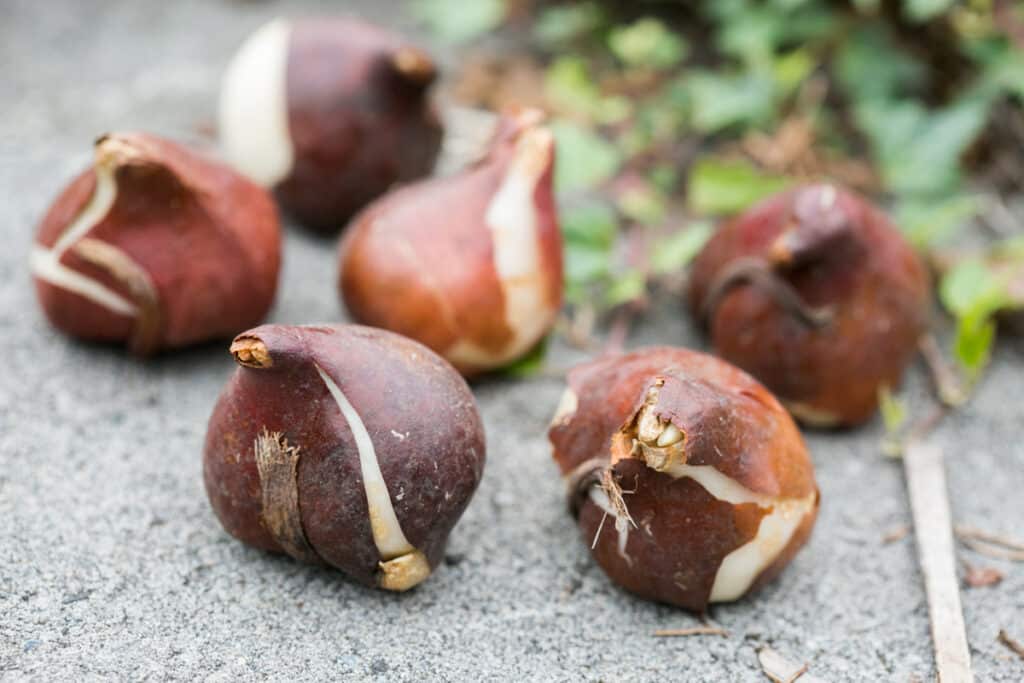
What Happens If You Don’t Dig Up Tulip Bulbs
Tulip bulbs grown in zone 8 or lower can be left in the ground. They do have a chance of dying from rot if the weather conditions are not ideal, but they may also do just fine and produce more flowers the next year. Healthy bulbs planted in ideal growing conditions should survive.
We planted these tulip bulbs late last fall. The bulbs are growing on a slope and the soil has good drainage. We are in zone 8, so we will take a gamble with these tulip bulbs and see if they make it to the following season!

In general, a tulip bulb left in the ground has less of a chance of surviving and producing a bloom the next season. There are many variable that determine whether the bulb will survive.
Tulips are susceptible to rotting and may rot with a lot of rain. If the tulip bulbs are left in soil that is consistently wet or soggy they may rot. And if the flower bulbs are planted in an area that gets watered frequently they may also rot.
Leaving tulip bulbs in the ground also increases the chance that they will become food for other critters such as moles, skunks or squirrels.
Many tulip growers dig up their tulip bulbs and replant them in late fall. But if you live in an area that has dry summers and the tulip variety is a good perennial grower, your tulip bulbs will survive and thrive!
Gardening Tip: Store tulip bulbs in a cool place out of direct sunlight.

The Best Soil For Growing Tulip Bulbs As Perennials
The most important part of caring for tulips is giving them great soil to live in! Providing great soil will help them to survive the long winter and produce a flower bloom the next year.
Plant tulips in fertile, well draining soil in order to thrive. Planting tulip bulbs on a slope allows any excess moisture to drain off, protecting the flowers from rot. Sandy soil rich in organic matter will allow the flower bulbs to thrive.
Tulip bulbs need a soil pH level of 6.6-5.
Thick clay soil is not ideal for tulips as this heavy soil full of moisture will encourage the bulbs to rot. Amend clay soil with organic matter and sand or vermiculite for added drainage.
If the soil is very sandy and not fertile, amend it by adding organic matter and bone meal at the time of planting. This will also give the plant the nourishment and drainage needed for next year’s bloom!
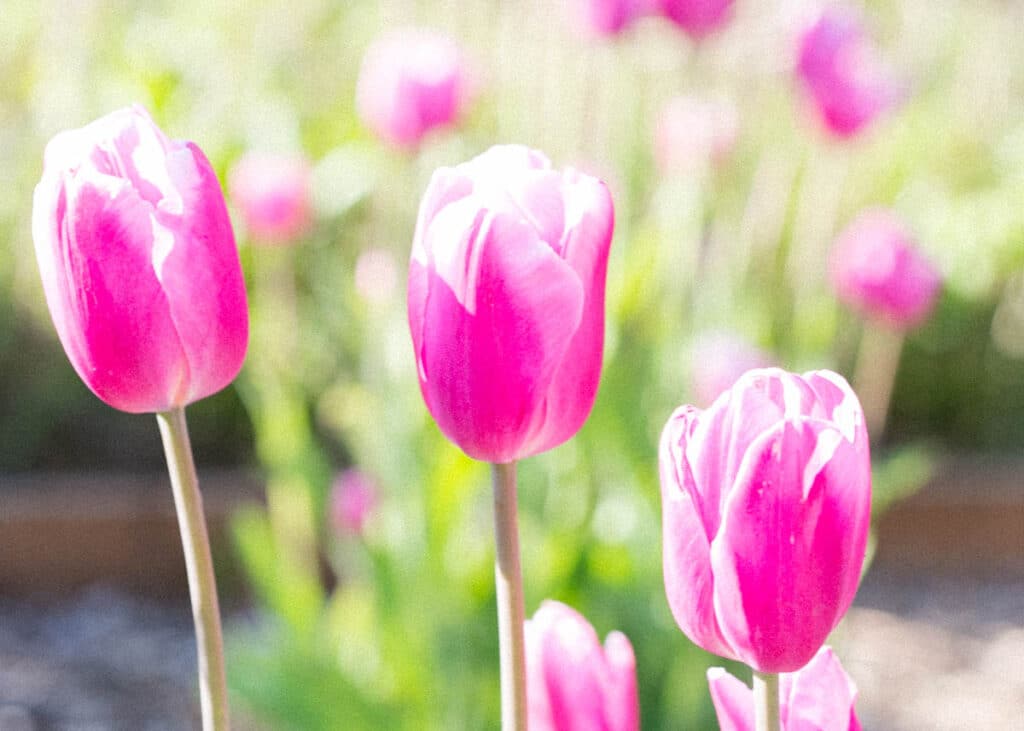
FAQ’s On Tulip Care After Blooming
Yes tulips produce one bloom per season. As perennial flowers, they can come back year after year. Only certain tulips species reliably come back each year however.
Cut off the tulip flower only and leave the foliage and leaves in tact. The leaves will collect energy from sunlight and feed their bulbs with this food. The leaves can be removed after they have turned yellowish brown and start to get crispy.
Cut the flower stem off immediately either at the base of the flower or at the flower head. Wait for the leaves to wither and turn yellow brown before cutting them off!
Final Thoughts
Tulips bring a stunning burst of bold color in early spring. To care for tulips after blooming simply cut the tulip flower off but leave the foliage and leaves in place!
The best time to do this is right after the flowers fade. This allows the plant to collect energy from the sun and put it into the new small bulbs developed from the mother bulb.

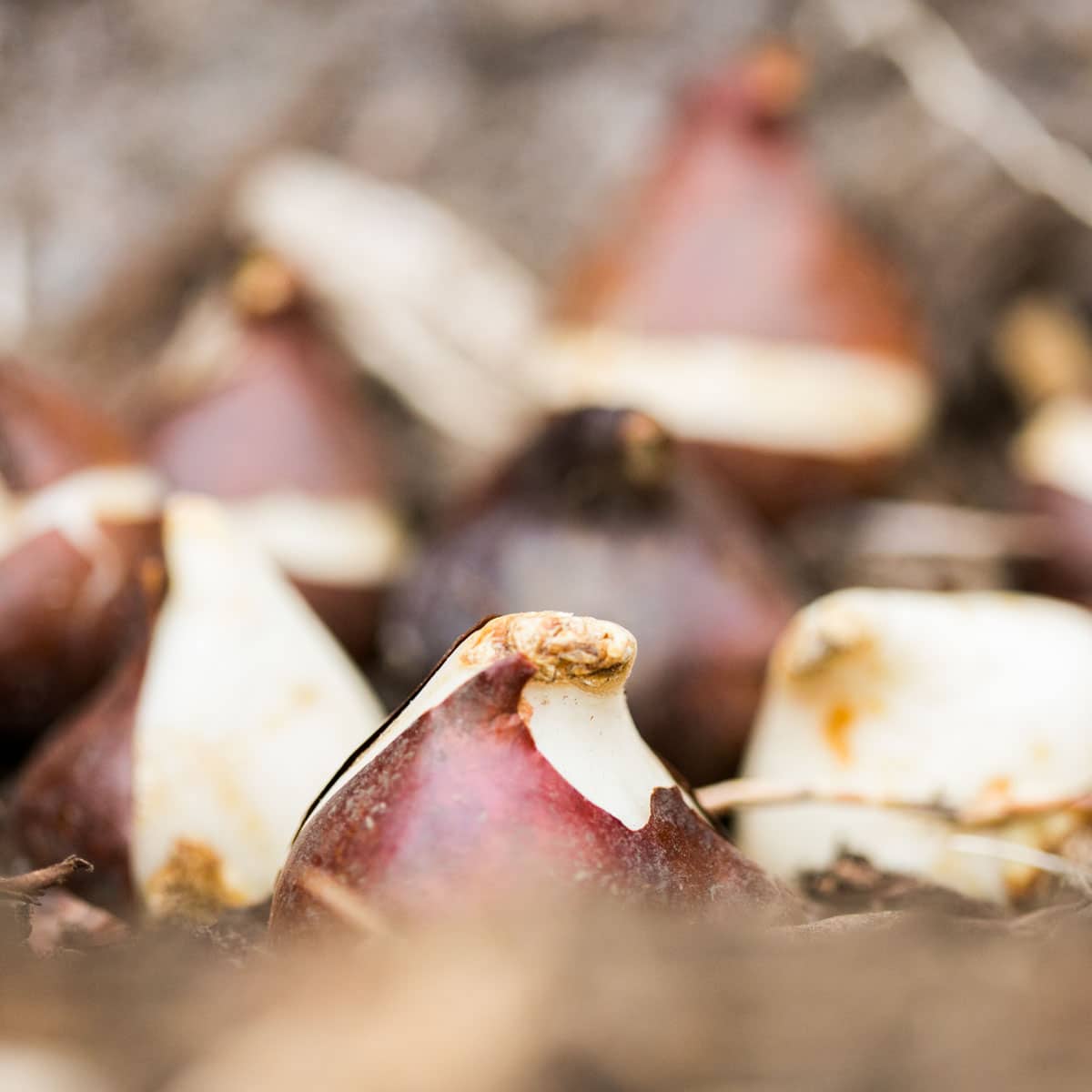
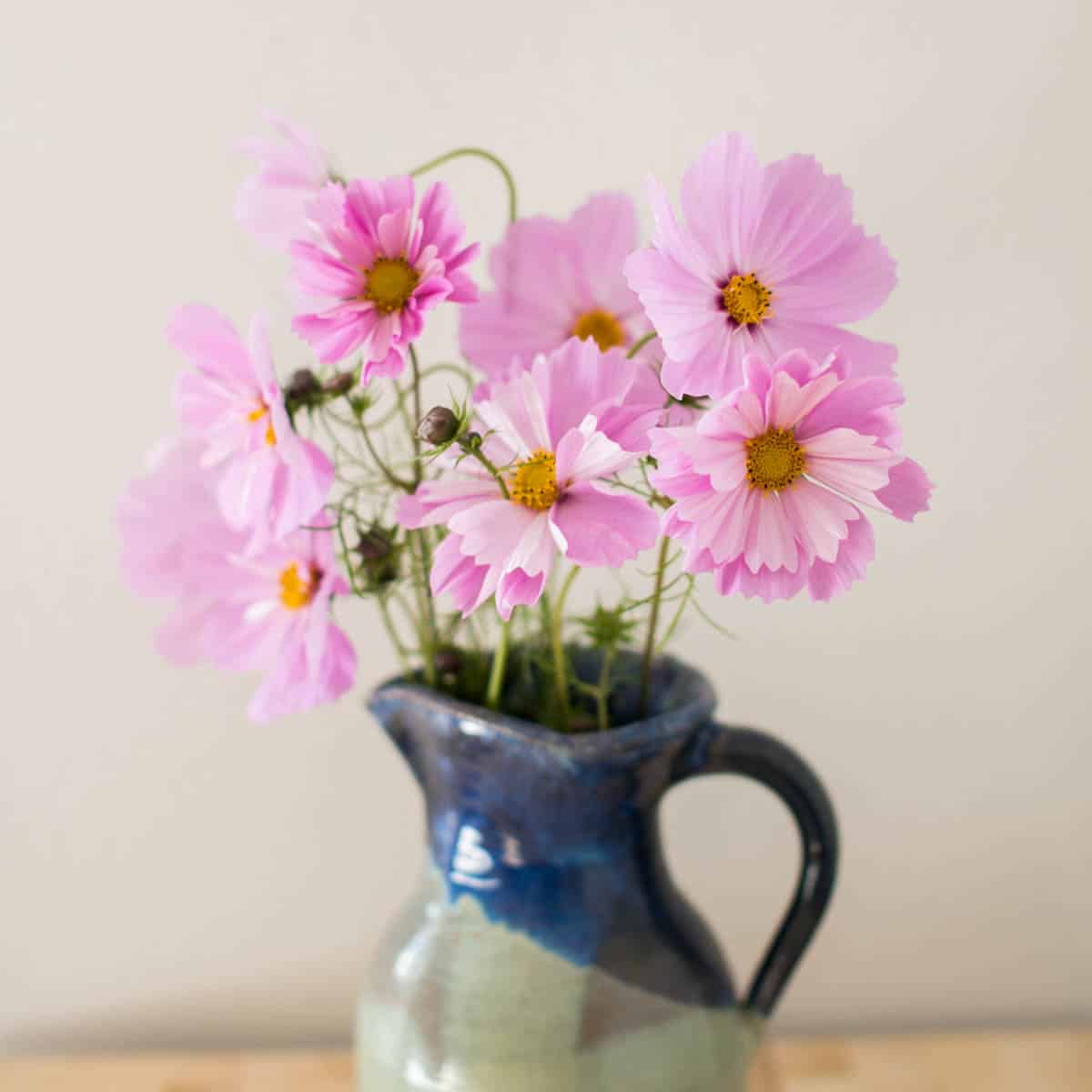

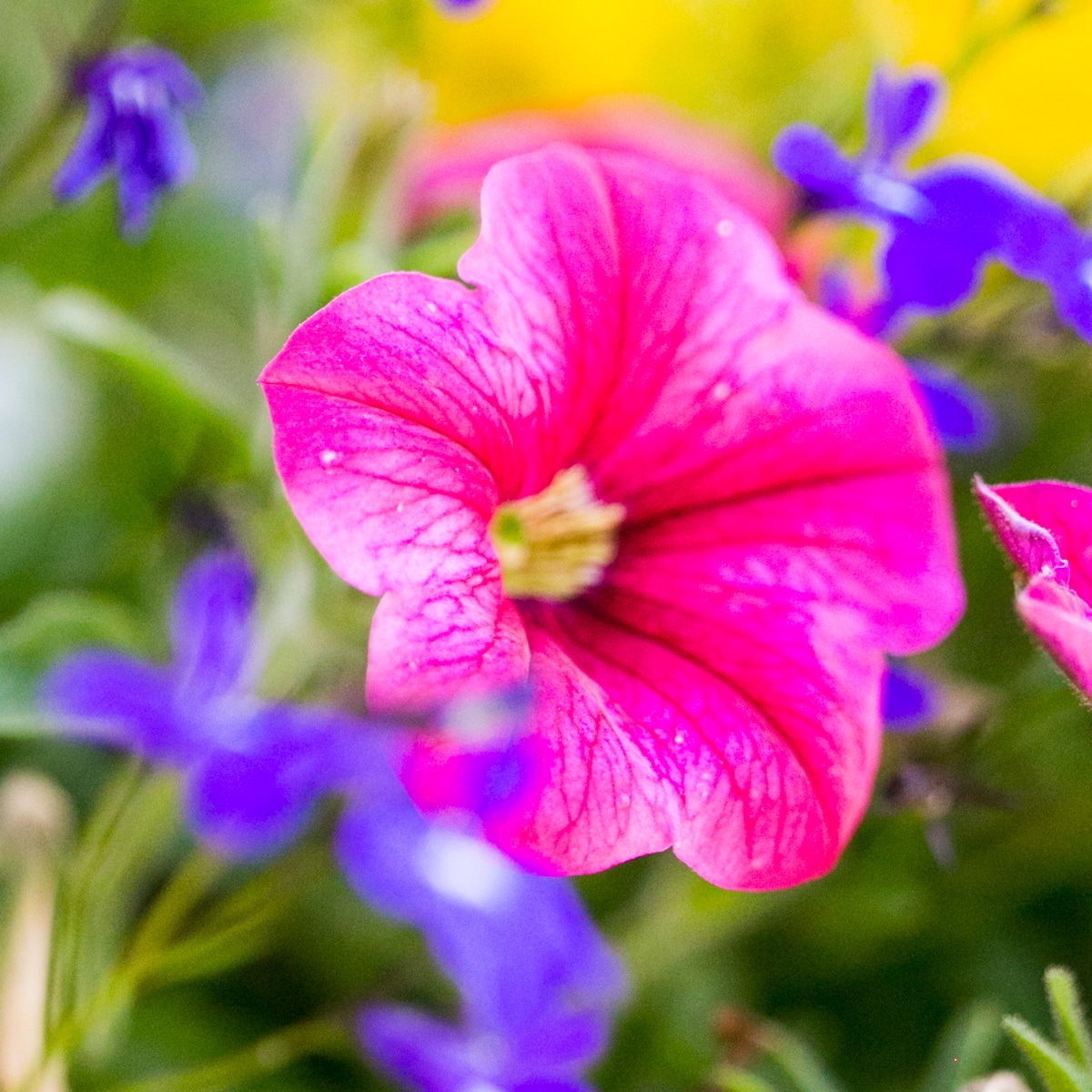


Lots of good info for the first-time tulip grower. What zone is southern Minnesota?
Hi Judy! Thanks for stopping by. I believe it is zone 4. https://northerngardener.org/find-your-hardiness-zone/ This is a map of your area if you want to check it out. I have never been to Minnesota- thrilled to have you stop by the blog. 🙂
1st time I have planted tulips and they are stunning. Your advice is very helpful as I’ll try it and see if I will be able to do it next year again. Thanks so much.
Hi Erna! Thank you so much for your feedback! Tulips are such a refreshing sight in early spring. Let us know how next year goes for you. 🙂